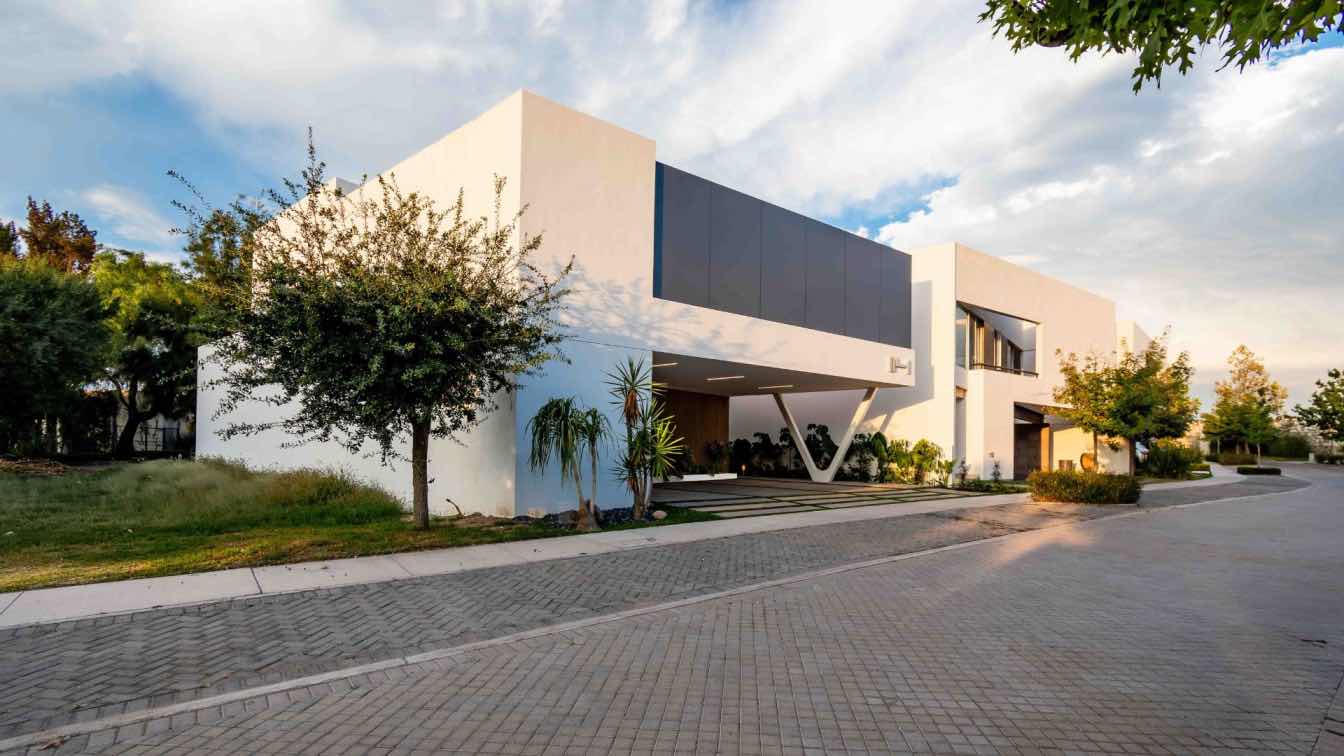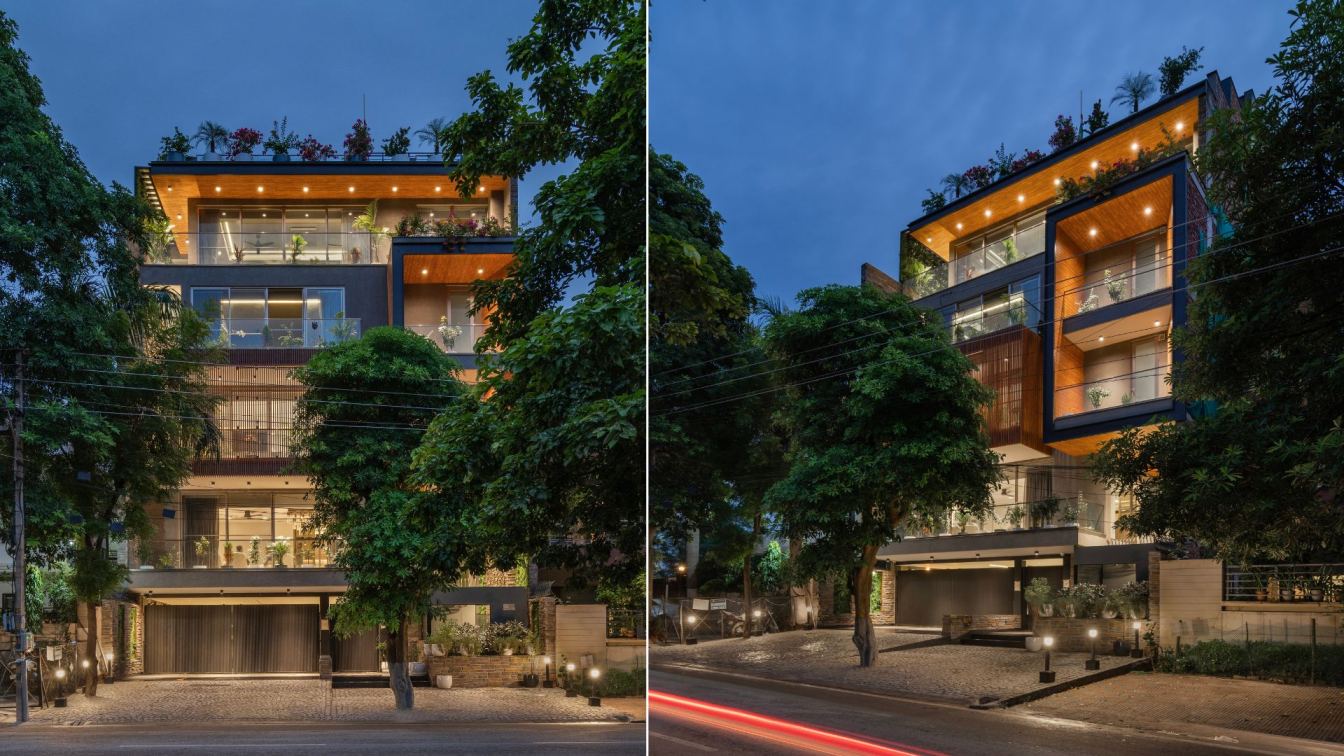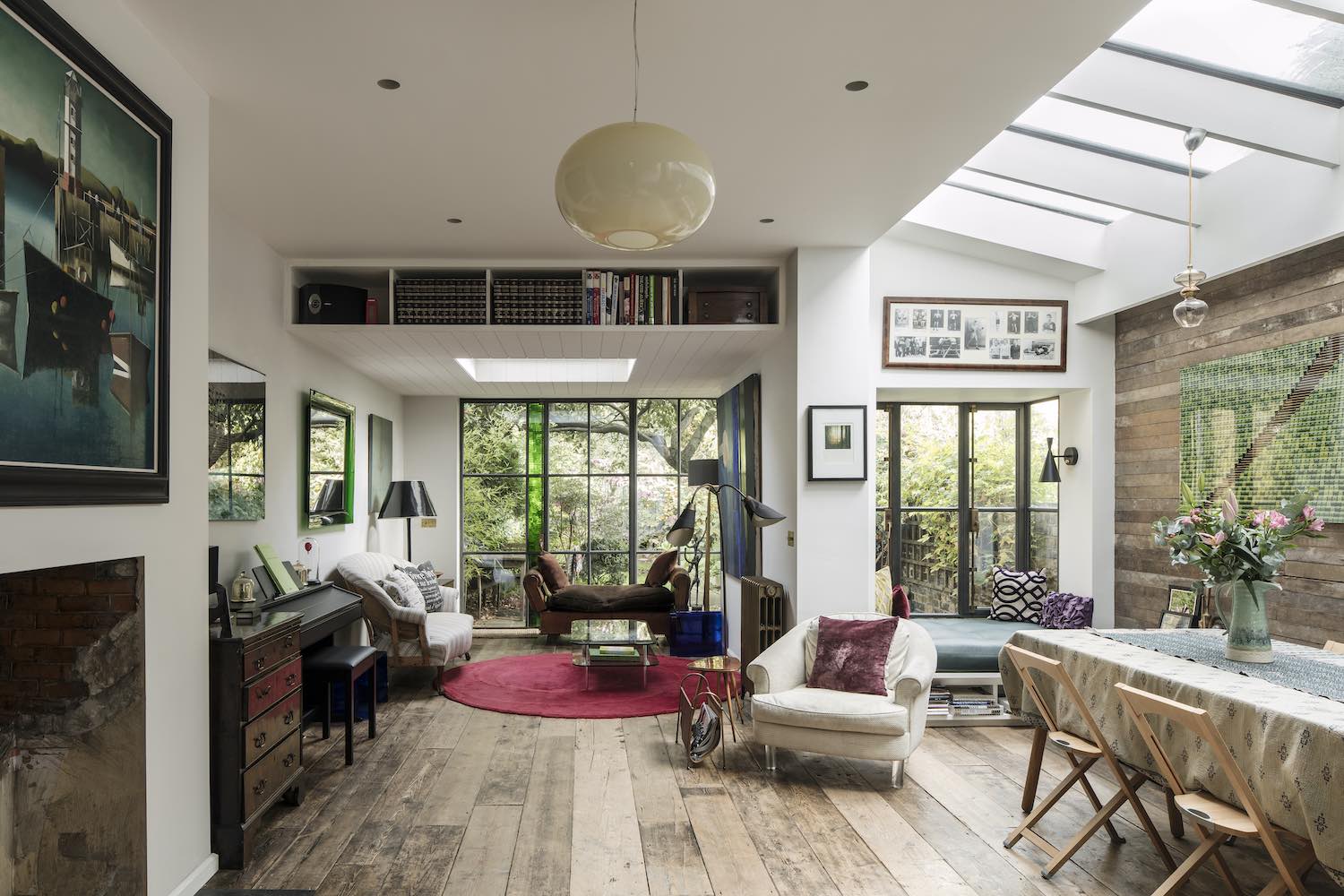The Tehran-based architectural practice ZAV Architects has recently completed Presence in Hormuz 2, a community of Superadobe earthbag domes that empowers its residents.
Community empowerment via urban development, Hormuz Island, Iran
Hormuz is a formerly glorious historic port in the strategic strait of Hormuz in the Persian Gulf, South of Iran, that controls the shipment of petroleum from the Middle East. The island has outstanding colorful surreal landscapes. Oddly, the local inhabitants of the beautiful, touristic and politically strategic island struggle economically, getting involved in illegal trafficking activities using their boats.
 Majara top view image © DJI
Majara top view image © DJI
Presence in Hormuz is a series of urban developments by a semi-public institution that hired ZAV Architects, in order to empower the local community of the island. Its second phase is a multipurpose cultural residence called Majara residence (meaning adventure) that ties together the lives of local people and visitors both culturally and economically.
 View of Majara Residence from upper path of the Soil Carpet Beach (South view) image © Soroush Majidi
View of Majara Residence from upper path of the Soil Carpet Beach (South view) image © Soroush Majidi
What’s to my benefit, what’s to the benefit of all?
In a country where the state struggles with political disputes outside its borders, every architectural project becomes a proposal for internal governing alternatives, asking basic questions: what are the limits of architecture and how can it suggest a political alternative for communal life? How can it attain social agency?
Architecture has the capacity be a mediator in the middle ground that converges the interests of different groups, from the state and investors to various classes and groups of people. Majara does so in bringing together the owners of land from the neighboring port of Bandar Abbas who organize an annual landart event in Hormuz, the investors from the capital city Tehran, and the local people of Hormuz as partners in the project.
 Adjacency of accommodation units in the lower level of the site image © Thmineh monzavi
Adjacency of accommodation units in the lower level of the site image © Thmineh monzavi
Under the economic distress of sanctions, increasing the GDP generates social change, which in this project is achieved by: 1. Building economically, to the benefit of the client. 2. Earmarking a bigger share of the budget to labor costs rather than expensive imported materials, to the benefit of the local population, empowering them by offering training for construction skills. 3. An adaptive and future- proof spatial scenario that can respond to unpredicted need, to the benefit of the client and the island. 4. Using materials and human resources from Iran, to reduce construction and transportation costs and increase the GDP, to the benefit of the whole country.
 View from the north-west toward the residence image © Thmineh monzavi
View from the north-west toward the residence image © Thmineh monzavi
Infinite Nader Khalili’s
Presence in Hormuz is a continuous process aiming at building trust rather than architectural objects, in order to encourage the participation of local people and the inclusion of their interests in any intervention in the island.
The project is a multitude of small-scale domes built with the superadobe technique of Nader Khalili, the innovative and simple technique using rammed earth and sand. Domes are familiar structures in the region. Their small scale makes them compatible with the building capabilities of local craftsmen and unskilled workers, which have been prepared for this project with previous smaller projects. Today they are trained master superadobe masons, as if Nader Khalili multiplied exponentially.
 Majara Resudence (top view) image © DJI
Majara Resudence (top view) image © DJI
Swelling Earth
The infinite number of colorful particles, be they soil, sand, gravel or stone, pile up and form the rainbow topography of Hormuz island. In this project a carpet is woven with granular knots inspired by the particles that make up the ecotone of the island. The sandbags that create the spatial particles (aka domes) are filled with the dredging sand of the Hormuz dock, as if the earth has swollen to produce space for accommodation.
 “Charta” a semi-open space in the south of the site, for a gradual transition from closed to open spaces image © Payman Barkhordari
“Charta” a semi-open space in the south of the site, for a gradual transition from closed to open spaces image © Payman Barkhordari
 Charta square: Entrance area of the accommodation section image © Tahmineh Monzavi
Charta square: Entrance area of the accommodation section image © Tahmineh Monzavi
 “Taniya” named the residence her own way: “Tiny colored houses” image © Payman Barkhordari
“Taniya” named the residence her own way: “Tiny colored houses” image © Payman Barkhordari
 View from the south-west, above the walkable rooftops image © Payman Barkhordari
View from the south-west, above the walkable rooftops image © Payman Barkhordari
 Stairways to the duplex accommodation units at Majara Residence image © Soroush Majidi
Stairways to the duplex accommodation units at Majara Residence image © Soroush Majidi
 Adjacency of accommodation units in the lower level of the site image © Payman Barkhordari
Adjacency of accommodation units in the lower level of the site image © Payman Barkhordari
 Upper-level spatial unit colonies image © Payman Barkhordari
Upper-level spatial unit colonies image © Payman Barkhordari
 Solar dome (for sunbathing) image © Tahmineh Monzavi
Solar dome (for sunbathing) image © Tahmineh Monzavi
 Hall inside a unit image © Tahmineh Monzavi
Hall inside a unit image © Tahmineh Monzavi
 Accommodation unit for four persons image © Tahmineh Monzavi
Accommodation unit for four persons image © Tahmineh Monzavi
 Locally produced furniture is used to furnish the spaces image © Tahmineh Monzavi
Locally produced furniture is used to furnish the spaces image © Tahmineh Monzavi
 Interior space of Majara Residence priced 20 dollars a night image © ahmineh Monzavi
Interior space of Majara Residence priced 20 dollars a night image © ahmineh Monzavi
 Entrance hall Image © Tahmineh Monzavi
Entrance hall Image © Tahmineh Monzavi
 Visitors from different social classes in the restaurant of Majara Residence in coexistence image © Tahmineh Monzavi
Visitors from different social classes in the restaurant of Majara Residence in coexistence image © Tahmineh Monzavi
 Charta as an interstice space between inside and outside image © Tahmineh Monzavi
Charta as an interstice space between inside and outside image © Tahmineh Monzavi
 Group photo of different stakeholders and participants in the project image © Tahmineh Monzavi
Group photo of different stakeholders and participants in the project image © Tahmineh Monzavi
 The building uses form and color to match itself to the natural landscape of the island. Since its completion, it has become the nest of bird flocks and home to local antelopes mage © Payman Barkhordari
The building uses form and color to match itself to the natural landscape of the island. Since its completion, it has become the nest of bird flocks and home to local antelopes mage © Payman Barkhordari
 The building uses form and color to match itself to the natural landscape of the island. Since its completion, it has become the nest of bird flocks and home to local antelopes image © Payman Barkhordari
The building uses form and color to match itself to the natural landscape of the island. Since its completion, it has become the nest of bird flocks and home to local antelopes image © Payman Barkhordari
 View to the eastern mountains image © Tahmineh Monzavi
View to the eastern mountains image © Tahmineh Monzavi
 View of Qeshm Island from rooftop image © Tahmineh Monzavi
View of Qeshm Island from rooftop image © Tahmineh Monzavi
 Night view from east image © Tahmineh Monzavi
Night view from east image © Tahmineh Monzavi
 Diagram
Diagram
 Diagram
Diagram
 Diagram
Diagram
 Diagram
Diagram
 Diagram
Diagram
 Topographic Plan of Majara Residence in its Context
Topographic Plan of Majara Residence in its Context
 Space usage Plan
Space usage Plan
 Section A-A
Section A-A
 Section B-B
Section B-B
 Section C-C
Section C-C
CONSTRUCTION TEAM
Project Constructor Amir Tehrani Nobahari
Construction manager Hormat Ghasemi
Construction vice-manager Ramin Koulaghani, Amin Timas
Mechanical constructor Javad Irandegani, Hamid Haji Posht-e-Gol
Floor constructor Davoud Etemadi
Fenestration builder Mehra Company
Interior plaster Gholamali Abbasi
Exterior plaster Esmaeil Salimi
Construction painter Farzad Moharami
Logistics Nabiollah Timas, Borhan Pouyan, Ali Ghanbari,
Ayoub Owj Hormozi, Khalil Owj Hormozi, Abdolhamid Hormozi, Davoud Hormozi, Ali Ghalandari Zehi, Farhad Shadan, Assad Gedri, Abbas Gedri, Ali Ghazi, Majid Bazmandeh, Ali Nasernia, Rahmat Ghalandari, Davoud Mohtaji, Morteza Mohtaji, Mohammad Vahedi, Mosayeb Zarei, Kambiz Naroui, Yasser Naroui, Nassir Narouii, Din Mohammad Naroui, Mojtaba Farhadi, Abbas Nasaji, Esfandiar Khorshidi, Khoubyar Khorshidi, Jalal Bameri, Ghassem Bameri, Enayat Karami, Reza Amirian, Eshgh Ali, Nabi Akrami, Mohammad Moallemi, Sajad Gholampour, Seyfollah Rasouli, Ali Golzari, Soheil Khedmatkari, Hosein Zohouri
About ZAV Architects
ZAV is a Tehran-based architectural practice active since 2007 which believes that architecture can redefine its capacities beyond the limits put in place by the building industry and is able to shift its operation field from that of a passive object to designing an entire process, apt to create significant impact through interacting with a larger field of forces, upgrading it to an actively engaged social and economic agent.
ZAV’s solution for attaining social optimum in a developing economy is incorporating architecture in the Gross Domestic Production. Our method is to create a bigger economic cake by tying together the benefit of the stakeholders to that of the larger society. Life and work in Middle East bring resilience towards recurring fundamental paradigm shifts. We seek a balance between hasty pragmatism and deterrent idealism, avoiding either the waste of resources or the loss of enthusiasm for taking action.
Some of their acclaimed projects are Presence in Hormuz, Farshfilm, Habitat for Orphan Girls, Nabshi Gallery, Cheshm Charan, and Pedari Guesthouse among others, which have won various national and international awards, including: multiple wins in the prominent Iranian architecture award of Memar, selected project of the New York Times in 2009, selected office from Iran in the London Festival of Architecture in 2014, two honorable mentions in Fritz Hoeger Award in 2017, winner of AR House awards, two wins in Architizer A+Awards in Community and Humanitarianism categories, award for Affordable Housing at WAN Awards in 2018, Cultural Building of the year at Dezeen Awards, Highly Commended Villa at WAF, shortlisted for Colour in Architecture at WAN Awards in 2019, Gold Medal (first prize) and Distinction (honorable mention) in Taipei International Design Award, and finalist in the Tamayouz Award for the architectural personality of the year in the Middle East in 2020.





